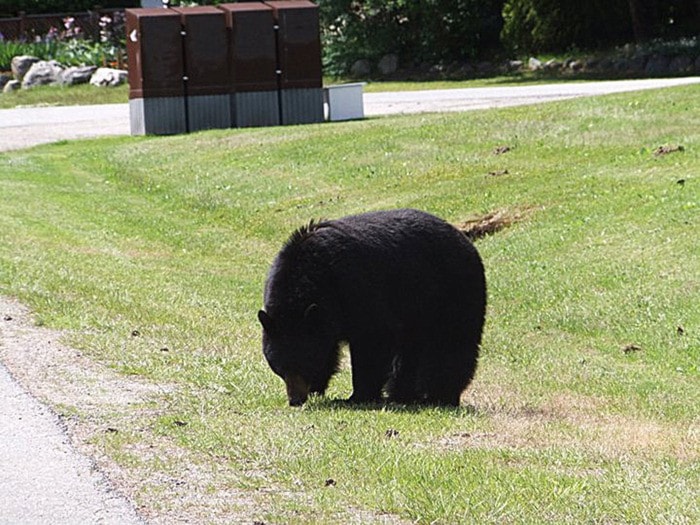A berry shortage has left more hungry bears than usual scrounging for food around Hope.
The increase is a result of a cold spring coupled with the heavy snowpack in the mountains, according to conservation officer James Kelly.
"If the bears learn they can gain easy food in town or off somebody's property, they're more apt to stay in the area and continue getting the easy meal," he said. "Bears can stay around basically right through until hibernation."
The Ministry of Environment's Conservation Officer Service recorded 122 reports of bear sightings in Hope between April 1, 2010 and March 31, 2011. So far this year, they have already received 120.
Bear traps have been set up with hopes of capturing and releasing the animals. Conservation officers trapped a black bear on Monday just off of Kettle Valley Road. Kelly said its ear tags indicated that it was a "repeat offender" and was consequently euthanized.
A string of bear sightings have kept residents on edge. The RCMP has received numerous calls in the last couple weeks from people in the area who have spotted bears roaming around their homes. Bears have reportedly been opening freezers and eating contents, pushing on doors to get into homes, removing screens from windows and lunging at home owners.
One bear in particular has been living in an abandoned house on Robertson Crescent. Heather Bergstrom found the animal roaming through her backyard last Wednesday.
"He just didn't care about anybody and wasn't aggressive at all," she said. "I just think they're beautiful animals and if we leave them alone, they'll be fine and just take off."
Another bear visited Alf Bourne's house on Saturday afternoon, near Third Avenue and Coquilhalla Street.
Bourne watched out his window as the bear climbed over his backyard fence to look for food. He said the animal just sniffed around, poked its head into bushes and walked around his flower garden a couple times before taking off.
"He walked around like he owned the place," said Bourne. "In 18 years here, I have never had anything happen like that before. I was really shocked."
A hungry bear wandering along Park Avenue also forced students at C.E. Barry Intermediate School to stay indoors during lunch and gym class last week.
Kelly said conservation officers are advising property owners to protect livestock with an electric fence, and remove attractants such as garbage, bird seed, pet food and fruit trees. While some bears appear tame, residents are reminded that they are wild animals with unpredictable behaviour.
The bear sightings have prompted Lydia Koot to organize a bear awareness program in Hope. She is working with the district, RCMP, conservation office and school board to develop a strategy that reduces the number of bear incidents and fatalities in the community, minimizes public fear about bears, and increases public understanding of bears and their natural habitat. As a result, Koot hopes people can learn to coexist with the wild animals.
"It's very upsetting if bears have to be destroyed because of our wrongdoing," she said. "We realize that once in a while they have to be shot, but let's reduce it as much as possible and not let it come to that. If there's nothing to eat here, they'll move on."
The project is currently in the beginning stages, but Koot hopes to introduce the program this summer through the Hope Mountain Centre.
For more information, contact the centre at 604-869-1274.
RCMP bear tips:
• Don't feed bears under any circumstances or allow them access to garbage or other food. Store trash inside buildings or other inaccessible areas. In addition, don't leave garbage or pet food out overnight. If bird feeders have been visited by a bear, stop feeding birds for one to two weeks, and begin taking feeders in at night.
• Do not frighten or scare bears. Shouting, clapping, blasting a car horn or motion-sensitive lights may scare off a bear temporarily. However, don't taunt a bear if it fails to respond to your efforts to frighten it.
• Sometimes when a bear is sighted, crowds may gather. This can aggravate the situation and cause the animals to display unpredictable behavior.
